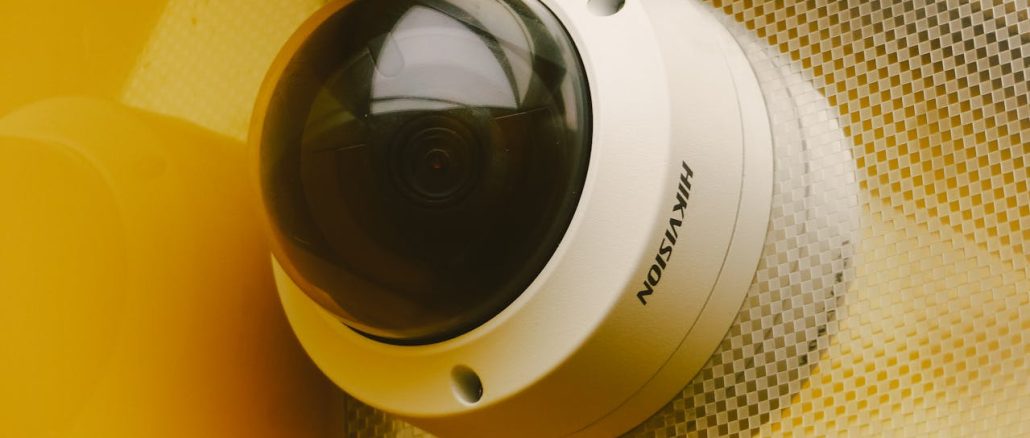
Protecting one’s belongings is a top priority for homeowners. Burglary and theft can happen to anyone, regardless of where they live or the type of property they own. Therefore, it is essential to take steps to secure your home and safeguard your valuables. This article will provide some top tips for protecting your belongings in your home.
One of the most important steps in protecting your belongings is to secure your home’s entry points. This includes doors, windows, and any other potential access points. Installing sturdy locks, deadbolts, and security bars can deter intruders and make it more difficult for them to gain entry. Additionally, installing a security system with motion sensors and cameras can provide an extra layer of protection and allow you to monitor your home remotely.
Another crucial step in protecting your belongings is to be mindful of how you store them. Valuables such as jewelry, cash, and important documents should be kept in a safe or secure location. Consider investing in a fireproof safe to protect your belongings from damage in case of a fire. It is also a good idea to keep an inventory of your possessions and their value, as this can be helpful in the event of a theft or insurance claim.
- Fundamentals of Home Security
- Innovative Technology for Protection
- Strategies for Valuables Safety
- Personal Practices to Deter Theft
- Insurance and Inventory Management
Fundamentals of Home Security
Protecting belongings in your home is a top priority for many homeowners. One of the fundamentals of home security is to install a reliable home security system. This can include a combination of security cameras, motion sensors, and alarms.
When installing home security, it is important to consider the layout of your home and the areas that are most vulnerable to break-ins. For example, ground floor windows and doors are often targeted by burglars. Installing security cameras and motion sensors in these areas can help deter potential intruders and provide evidence in the event of a break-in.
Another important aspect of home security is ensuring that all doors and windows are properly secured. This can include installing deadbolts, locking mechanisms, and security bars. It is also important to ensure that all doors and windows are closed and locked when leaving the house or going to bed.
In addition to physical security measures, it is also important to take precautions with personal information. This can include shredding sensitive documents, not sharing personal information online, and being cautious with who you give access to your home.
By implementing these fundamental home security measures, homeowners can protect their belongings and have peace of mind knowing that their home is secure.
Innovative Technology for Protection
There are several innovative technologies available in the market that can help protect your belongings in your home. Here are a few examples:
Smart Home Security Systems
Smart home security systems are becoming increasingly popular as they offer a comprehensive way to protect your home. These systems use sensors, cameras, and other devices to monitor your home and alert you when there is any suspicious activity. Some systems even allow you to remotely control your home’s security features, such as locking doors and turning off lights. For instance, companies like Viking Fence can provide high-quality fencing solutions that complement your smart security setup. By combining advanced technology with durable fencing, you create a comprehensive security system that not only deters intruders but also gives you real-time control and monitoring capabilities.
Biometric Locks
Biometric locks are another innovative technology that can help protect your belongings. These locks use fingerprint or facial recognition technology to allow access to your home. This means that only authorized individuals can enter your home, providing an additional layer of security.
Asset Tracking Devices
Asset tracking devices are small devices that can be attached to your valuable belongings, such as jewelry or electronics. These devices use GPS technology to track the location of your belongings, allowing you to locate them if they are lost or stolen.
Overall, there are several innovative technologies available that can help protect your belongings in your home. By investing in these technologies, you can have peace of mind knowing that your valuable possessions are safe and secure.
Strategies for Valuables Safety
When it comes to protecting valuable items in your home, there are several strategies you can employ to ensure their safety. Here are a few tips to keep in mind:
- Invest in a safe: A safe is a great investment for storing important documents, jewelry, and other small valuables. Make sure to choose a safe that is both fireproof and waterproof for added protection.
- Install a security system: A security system can help deter burglars and alert authorities in case of a break-in. Make sure to choose a system that includes motion sensors and video surveillance for added protection.
- Hide your valuables: If you don’t have a safe or security system, consider hiding your valuables in unexpected places. For example, you could hide jewelry in a false bottom of a plant pot or stash important documents in a hidden compartment in your bookshelf.
- Keep a record of your valuables: In case of theft or damage, it’s important to have a record of your valuable items. Take photos of your valuables and keep a list of their descriptions, serial numbers, and purchase dates. This will make it easier to file an insurance claim and recover your items.
By following these strategies, you can help ensure the safety of your valuable items in your home.
Personal Practices to Deter Theft
There are several personal practices that can help deter theft and protect your belongings in your home. These practices are simple, yet effective, and can make a significant difference in keeping your home safe.
1. Lock Doors and Windows
One of the most basic and effective ways to deter theft is to lock all doors and windows. This may seem obvious, but many people still forget to do this, especially when they are in a hurry or feel safe in their neighborhood. Make sure all doors and windows are securely locked, even when you are at home.
2. Keep Valuables Out of Sight
Another way to deter theft is to keep valuables out of sight. Don’t leave expensive items, such as jewelry, laptops, or cash, in plain view. Instead, store them in a safe or a secure location that is not easily accessible.
3. Install a Security System
Installing a security system is another effective way to deter theft. A security system can include cameras, alarms, and motion detectors, which can alert you and the authorities if someone tries to break into your home.
4. Be Careful with Social Media
Be careful with what you post on social media. Avoid posting pictures of expensive items or announcing when you are away from home. This can give potential thieves an idea of what you have and when you won’t be home.
5. Get to Know Your Neighbors
Getting to know your neighbors can also help deter theft. They can keep an eye on your home when you are away and alert you if they see anything suspicious. In turn, you can do the same for them.
By following these personal practices, you can help deter theft and protect your belongings in your home.
Insurance and Inventory Management
Having insurance and keeping an inventory of belongings are two important steps in protecting your home and belongings.
Insurance
Homeowner’s insurance can provide financial protection in case of theft, damage, or loss of personal property. It is important to review and understand the coverage provided by your insurance policy. Some policies may have limitations or exclusions, so it is important to ask questions and clarify any uncertainties.
It is also important to keep an up-to-date inventory of your belongings. This can help ensure that you have adequate coverage and can also make the claims process smoother in case of loss or damage.
Inventory Management
Creating an inventory of your belongings can be a daunting task, but it is worth the effort. Start by making a list of all your possessions, including the make, model, and serial number if applicable. Take photos or videos of each item and store them in a secure location, such as a safety deposit box or cloud storage.
It is also important to update your inventory regularly, especially after making new purchases or significant changes to your home. This can help ensure that your insurance coverage accurately reflects the value of your belongings.
Overall, insurance and inventory management are essential steps in protecting your home and belongings. By taking these steps, you can have peace of mind knowing that you are prepared for the unexpected.
Photo by Atypeek Dgn:
I think your “Top Tips for Protecting Belongings in Your Home: Expert Advice” blog post could really benefit from a link to our “https://www.vikingfence.com/access-control-systems/” page.
In my opinion, though your article is great, our page can give the current post some extra value.




